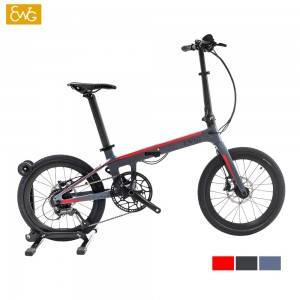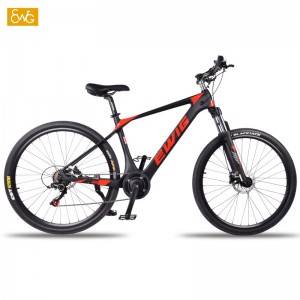Mountain biking is a rough and tumble sport. Even the most skilled riders wreck every now and again. As riders, we're accustomed to wearing helmets, eyewear, and often knee and elbow pads, but what about the bikes we ride? How do you protect your mountain bike from crash damage?Mountain bikes aren't getting any cheaper. If you want to keep your bike looking new and prevent needless damage, adding protection to your frame is the way to go. Adding a few ounces of protective tape or downtube armor can prevent scratches, gouges, dents, and even cracks that can ruin both carbon and aluminum frames.
Here are the best ways to protect your mountain bike from trail damage.
The Best MTB Frame Protection
Tailored Protection Kits
The Tailored Protection kit is specifically designed for each model and size and provides up to 95% coverage. Unlike other options, each kit includes all the tools you need for installation (microfiber cloth, squeegee, cleaning wipes, and install solution concentrate). Kits are available in clear gloss or matte finish. The film has low surface energy, which deflects dirt, and is self-healing, so minor scuffs and scratches disappear with a little heat.
Component and carbon mountain bike frame manufacturers spend tons of time and effort making their bikes aesthetically pleasing, so it makes sense to protect that expensive paint job.
Most people know that the drive-side chainstay on a bike is vulnerable to chain slap—that annoying clacking as you ride over rough surfaces and the chain bounces on the stay. At best it will chip the paint—at worst it could cause more serious frame damage.
On any frame it is worth protecting the chainstay on the drivetrain side of the bike. My preferred method is a stick-on protector such as those from All Mountain Style. The advantage of a stick-on patch rather than a neoprene chainstay protecter is that over time it will not collect dirt and oil—giving a cleaner and neater look.
The top tube is the final part worth protecting. It is an often overlooked area, but it can take a significant hit during a crash—when the gear shifters or brake levers can be flung around and give it a real pin-point impact.
A simple frame protection patch can be all the protection required and will hopefully help avoid that crash necessitating a very expensive frame repair.
When considering the top tube of the bike, also consider how bikepacking bags can wear at the paintwork or finish of the frame. A simple top tube protector will avoid the paintwork becoming scuffed or damaged with repeated use of bikepacking luggage.
Hopefully these tips on how to protect the paintwork and frame of your bike help to keep it in great condition for longer.
Tire protection
What’s in the box: system comes with liners and valves. All you have to do is install it with your favorite sealant and hit the trails. Some riders even customize it further and only run the liner in the rear tire to minimize the weight penalty. use a foam liner that sits inside the tire to protect the rim during an impact and also provide sidewall support for the tire so you can run lower pressure and improve traction.
Putting stuff in your tires to prevent flats is nothing new. Thorn-resistant liners, tubeless tapes and sealants, and a wide array of other products have been around almost as long as inflatable bike tires.
Accessory protection
Even if your suspension fork and shock don’t show it, they need attention at least once a season if you ride often. The internals use o-rings, pressurized pistons, and many precision moving parts internally. Those moving parts need to be lubricated to work properly, and the oil degrades over time. If you neglect the recommended service intervals, expect your mechanic to have some bad news for you the next time your fork or shock “doesn’t feel very plush” anymore.
As a bike drivetrain wears, the chain takes the brunt of the abuse. The pins, plates, and rollers that can withstand thousands of pounds of force when new will slowly degrade. As those parts move together in sync with the rest of the drivetrain, they ever so slowly wear down with every pedal stroke. As a result, the once tight tolerances between chain pins become looser. This is commonly referred to as “chain stretch.” If a stretched and worn-out chain is neglected and used for too long, even if it’s not broken or causing shifting issues, it will cause damage to the cassette and chainrings by wearing that looser chain pin spacing into the teeth.
Then, when the chain is finally replaced, usually after an on-the-trail failure or after the bike shop mechanic rolls his eyes at you as he reaches for his chain-checker tool, the new chain won’t mesh with the rest of the drivetrain. Because the old chain has left its mark on the other components, they must be replaced, too, leading to a steeper repair bill.
Keep carbon mountain bike clear
Regular cleaning can give you a chance to inspect the bike carefully to see if there are obvious signs of damage. Regardless of the material of the frame, this should be your routine during riding. Of course, rough cleaning also needs to be avoided, which will damage the epoxy resin wrapped around the carbon fiber. If you have any questions about how to clean your car scientifically, you can consult the manufacturer for advice. Any degreaser or cleaning products for bicycles and old-fashioned mild soapy water should be used appropriately and reasonably.
China bike protection isn’t always about sticking on a protective layer or bolting on a protective cover. Sometimes, the best protection isn’t protection at all but rather preventive maintenance. Riders should know that they don’t have to understand every detail about the internal workings of their suspension components, but what every rider should understand is that that internals need attention periodically.
learn more about Ewig products
Post time: Dec-10-2021


